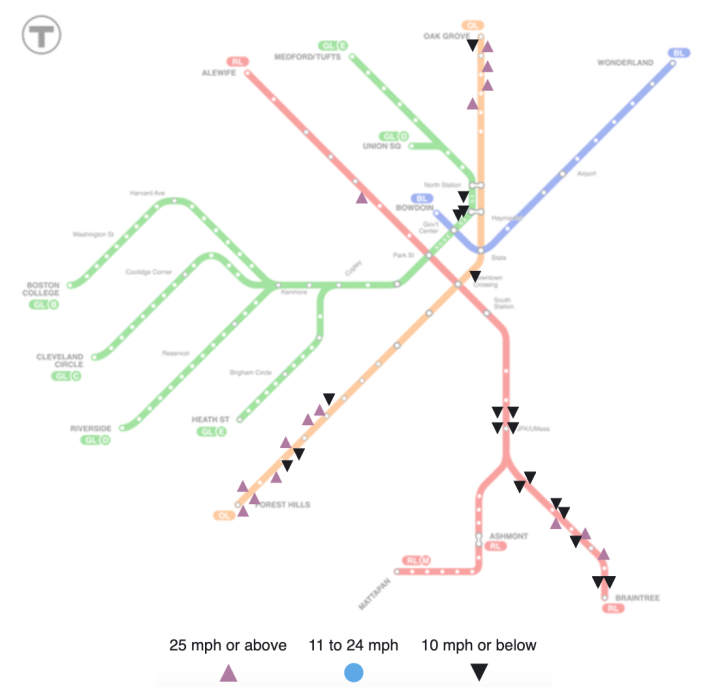Last week's closure of the Red Line downtown forced thousands of riders to endure long shuttle bus rides across traffic-clogged streets in downtown Boston – but it also allowed workers to fix six more slow zones between the Kendall/MIT and Park Street stations, resulting in subway trips that are one to three minutes faster between downtown Boston and Cambridge.
The MBTA today suspended Red Line service between JFK/UMass and Kendall/MIT for 8 days last week, from the morning of Monday August 19 to the end of Monday, August 26.
The closure was part of the T's year-long track improvement program, which has steadily been cleaning up dozens of slow zones that proliferated from deferred maintenance during Gov. Charlie Baker's administration.

During the closure, workers replaced old rails, ties, insulators, signal cables, and other equipment, and eliminated six slow zones between Kendall/MIT and Park Street.
According to data that TransitMatters compiles from the T's real-time train location information, median travel times for northbound subway rides between Park Street and Kendall/MIT (about 1.3 miles) were 6 minutes and 14 seconds on August 18.
Since the line reopened on Tuesday, median travel time has been cut in half, to a little over 3 minutes.
Southbound travel times improved from 4 minutes and 6 seconds before the closure to 3 minutes and 6 seconds today.
The T is planning a longer closure of the Braintree branch south of the JFK/UMass station in September. That section of track accounts for almost two-thirds of the remaining slow zones across the entire subway system.





